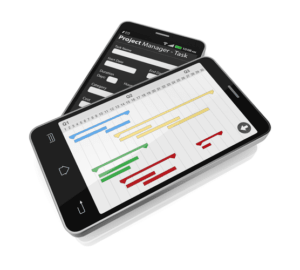Bookkeeping
Gym Financial Statement Examples + FREE XLS Templates

These services are typically charged separately and contribute to the overall revenue generated by the gym. Use the best software for managing a gym with the Exercise.com platform so everything can be nice, neat, and organized. Remember, good accounting practices are not just about compliance, they’re an integral part of running adjusting entries a successful business.

Bookkeeping Catch Up
Fitness professionals who are owners of incorporated businesses must fill out a T2 corporate tax return in addition to their T1 personal income tax return. For tax purposes, gym equipment is often categorized under the 7-year property class for depreciation. However, the actual depreciation method and schedule can vary, so it’s recommended to consult with a tax professional. This is a perfect plan for hard-charging, Accounting for Marketing Agencies goal-oriented, Type A entrepreneurs who aren’t afraid of a challenge—people just like you. If you don’t have it, it’s likely you’ll buy “just one more bike” for no good reason.
- COGS, or Cost of Goods Sold, for a gym could include costs directly related to providing services to members.
- The role of a gym bookkeeper extends beyond simply inputting numbers into spreadsheets or software programs.
- It is essential for gyms to diligently maintain accurate records within their Retained Earnings Account since it affects key financial metrics such as return on equity (ROE) and plowback ratio.
- In a gym setting, having a well-structured COA is crucial for effectively managing and tracking financial activities.
- Our team of CPAs and CFOs develop budgets and projections that will help you plan for the future.
How to Manage the Finances of Membership

Always consult with a qualified accountant or financial advisor when setting up your accounting system. Gain a clear understanding of net profit for your fitness business and take the first step toward financial stability. Our clients come to us for the meaningful numbers they need to understand, plan, and grow their gyms to maximum success. Tax season can be a breeze when you maintain organized and accurate monthly financials throughout the year. Consistent bookkeeping ensures that you have all the necessary documents ready for tax filings.
Utilizing Financial Ratios for Performance Evaluation in Gym Financial Statements
If you want your gym to expand at the franchise model and witness long-term success, you have to make sure that you handle payable and receivable accounts separately. Payable accounts are the amount that you have to pay to different vendors for equipment, rent, utilities, and payrolls. For example, the membership cost that you have to receive from your clients falls bookkeeping for personal trainers in the category of accounts receivable. After making a record of each transaction carried out in your gym, you have to ensure that you have categorized each transaction into specific accounts. Distribution of each transaction per category allows you to define the general expenses of your gym and also aids you in determining the financial reporting.
- If your gym employs personal trainers, billing and invoicing software can simplify the process of paying them for their services.
- Additionally, consider consulting accountants specializing in the fitness industry, as they may be able to offer suggestions based on their extensive knowledge of financial operations within the gym landscape.
- Exercise.com’s software stands out in the gym billing and invoicing landscape for its robust functionality and user-friendly interface.
- Accounting for a gym involves tracking all financial transactions, managing memberships, processing payments, and generating financial reports.
- This process may include obtaining an Employer Identification Number (EIN) from the IRS if you’re in the U.S., which you’ll use for tax purposes.
Four tasks for gym accountants might include handling payroll, managing accounts payable and receivable, tracking and categorizing expenses, and preparing financial statements. Platforms like Exercise.com provide features to make these tasks easier and more streamlined. By leveraging these tools and practices, gym owners can create a financially sound environment that not only benefits their business but also enhances the overall experience for gym members. Running a successful gym requires not only providing excellent services and facilities but also effectively managing the financial aspect of the business. Key performance indicators (KPIs) provide valuable insights into the financial health of a gym and help owners make informed decisions. One crucial KPI is membership growth rate, which measures the percentage increase or decrease in the number of members over a specific period.

Stay Prepared for Tax Filings
Additionally, it entails keeping track of expenses related to equipment purchases or leases, facility maintenance costs such as utilities or repairs, employee wages and benefits, marketing expenses, and more. This is where bookkeeping comes into play as an essential aspect of gym management. By accurately recording and organizing financial transactions, a gym bookkeeper helps to maintain fiscal stability, make informed decisions, comply with legal requirements, and optimize operational efficiency. To handle deferred revenue, gym owners must ensure accurate record-keeping and recognition in their accounting systems. This involves initially recording the received payment as a liability on the balance sheet until the corresponding services are delivered or the membership period begins.
Gym Chart of Accounts Template (PDF, DOC, XLS – FREE)

For example, you have appointed personal trainers as full-time employees and pay your employees on a monthly basis in your gym. Then, in this scenario, you are able to get tax benefits on the salaries of your permanent employees. As a gym owner, if you want your gym to be a long-term success, you have to navigate the financial terrain. This navigation allows you to keep a record of your financial success and compliance in case of taxes.
- With our team working daily on the accounting tasks, we categorize numbers correctly and with the detail you need to make decisions.
- Be cautious when using payment apps like Venmo or Cash App; remember to include vendor names in your bookkeeping software for accurate records.
- Their basic packages can help you track income and expenditures as well as manage bills and invoices.
- Pay team members from this account, and pay yourself from this fund when you are working as a team member.
- A bookkeeping professional can offer clear, accurate reports that simplify tax filings, payroll breakdowns, and overall financial management for gyms and Pilates studios.
- Gym owners should look for accounting software that offers features such as invoicing, expense tracking, financial reporting, payroll integration, and the ability to manage membership fees and recurring payments.
This functionality extends to payment processing software for sports clubs, making it the best choice for fitness businesses that require an all-in-one platform. For instance, Exercise.com provides a comprehensive solution for your fitness business needs, with billing and invoicing features designed to make your financial processes as seamless as possible. They also offer integrated gym management software, workout software, custom-branded apps, and fitness assessments – everything you need in one place. Key elements of gym business plan financials include detailed projections of income and expenses, cash flow statements, balance sheets, and break-even analysis. These elements provide a comprehensive view of the gym’s expected financial performance, helping to attract investors and guide strategic decision-making. While QuickBooks is a reliable accounting software, gym businesses might find more value in a comprehensive management solution like Exercise.com.
- After decades of experience in the fitness industry, we love helping HIIT & Crossfit Gyms grow and become more profitable.
- The purpose of a COA is to provide structure and organization to an organization’s financial records.
- This is where bookkeeping comes into play as an essential aspect of gym management.
- Analyzing the revenue generated from corporate partnerships can help gym owners assess the success of these programs and make informed decisions about future partnerships.
- QuickBooks can be a viable solution for small gym businesses as it provides basic accounting tools necessary for tracking finances, managing invoices, and generating reports.

It also shows the gym’s equity, representing the owner’s stake in the business. This snapshot of financial standing at a given moment helps assess the gym’s financial health and stability. In today’s digital age, technology plays a crucial role in streamlining finance management in gyms. There are various software applications and tools available that can automate financial processes, from accounting and bookkeeping to budgeting and reporting.

